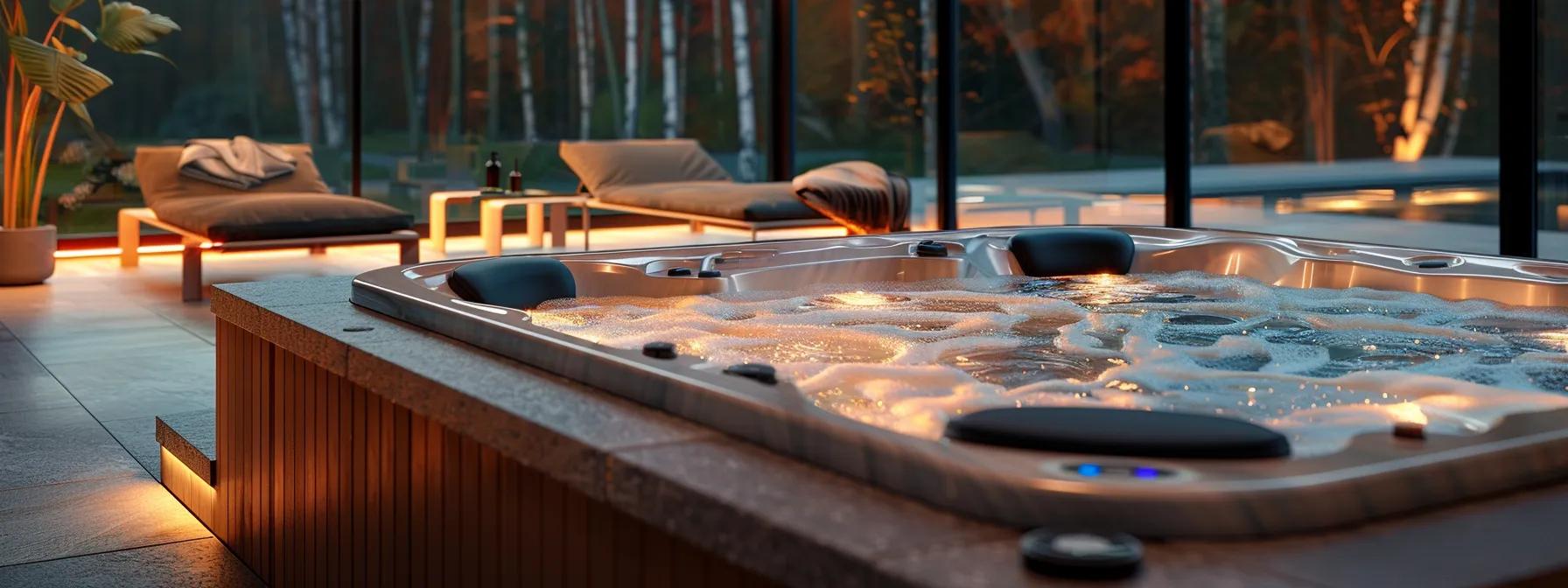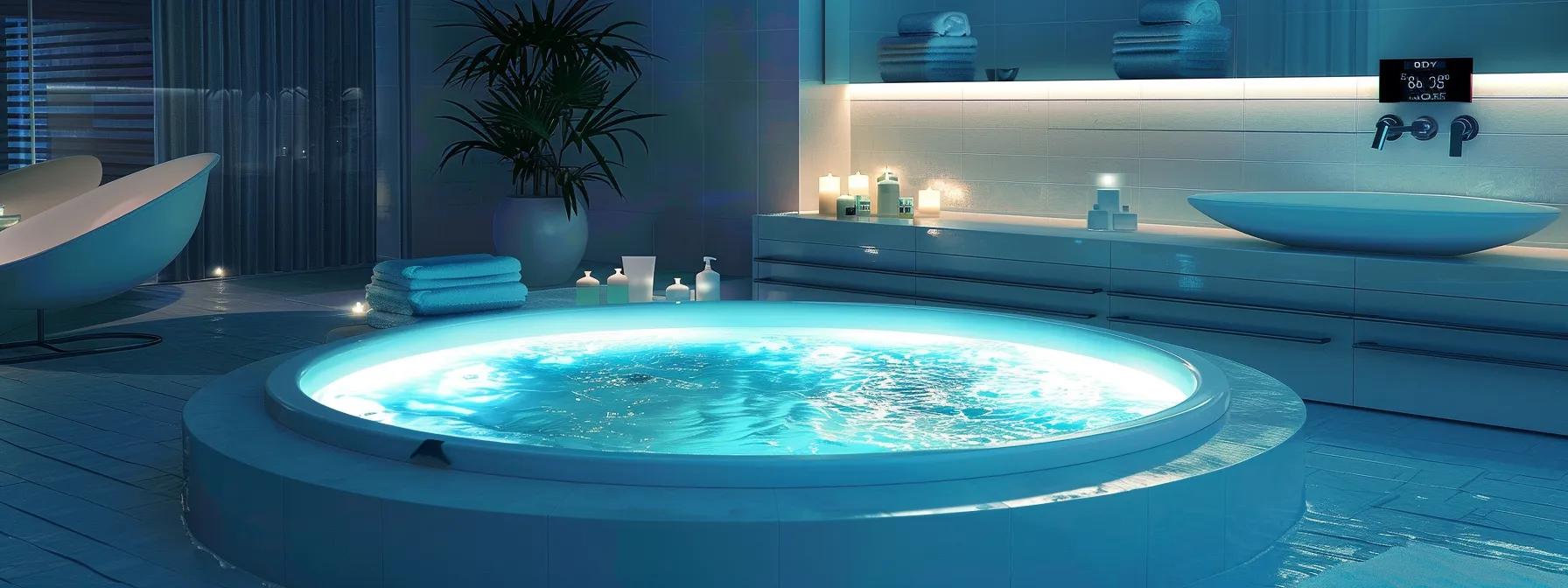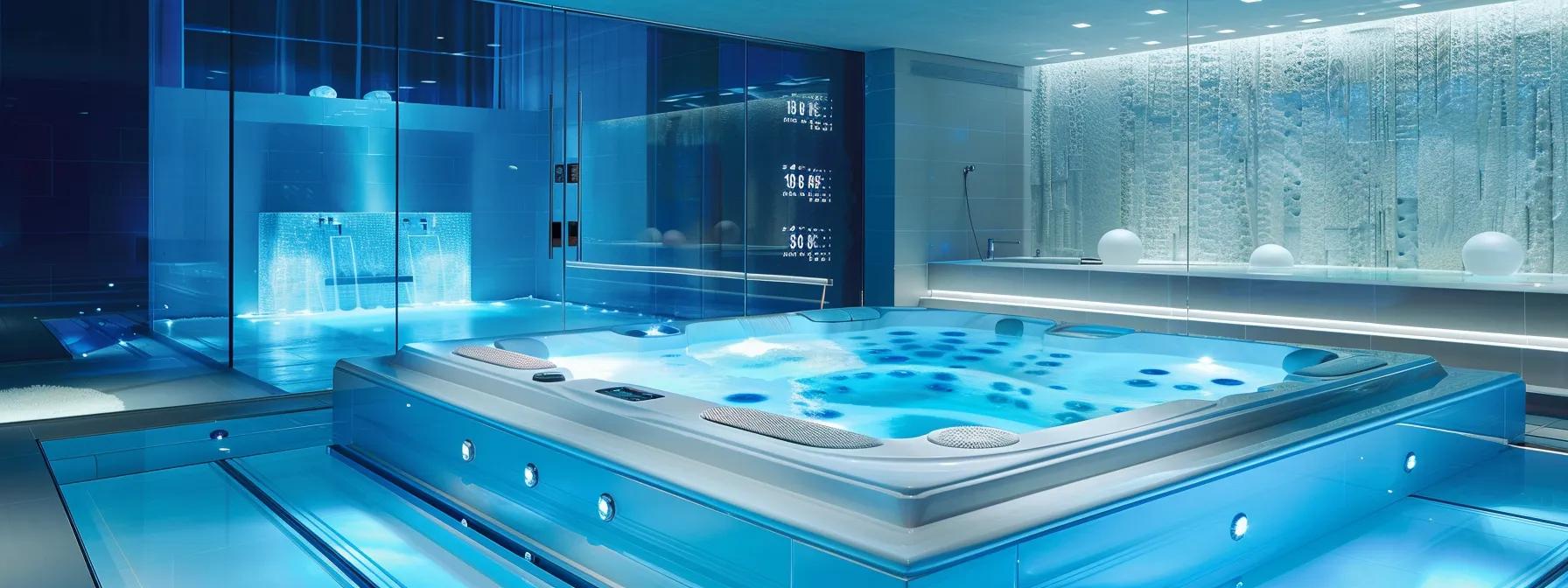Table of Contents - Best Practices for Managing pH Levels in Your Hot Tub
- What Is pH and Why Is It Important for Your Hot Tub Water?
- How Do You Test the pH Level of Your Hot Tub Water?
- How Can You Raise the pH Level in Your Hot Tub Safely?
- How Can You Lower the pH Level in Your Hot Tub Effectively?
- Why Is Alkalinity Important for Controlling Hot Tub pH Levels?
- How Do Sanitizers Like Chlorine and Bromine Influence Hot Tub pH?
- How Do You Troubleshoot Common Hot Tub Water Problems Related to pH?
- Detailed Comparison Table of pH Control Factors
- Comprehensive List: 5 Signs and Solutions for pH Imbalance in Hot Tub Water
- Additional Tips and Tricks for Maintaining Clear Hot Tub Water
- Frequently Asked Questions
- Final Thoughts
This blog post may contain affiliate links. As an Amazon Associate I earn from qualifying purchases.
How to Control the pH Level of a Hot Tub for Safe and Balanced Water
Maintaining the proper pH level in your hot tub is crucial for effective water care. A reliable Hot tub chemical monitoring system can help ensure that your water always meets the necessary standards. Balanced pH preserves equipment longevity and enhances hot tub cleaning routines, ensuring a safe, enjoyable soak. Improper pH can cause skin irritations, reduce sanitizer effectiveness, and damage plumbing over time. This article shares strategies for controlling your hot tub’s pH, explains what pH is, and describes its impact on water chemistry and user experience. You’ll learn how to test pH accurately, safely adjust it, and troubleshoot common imbalances, all important steps for maintaining clear hot tub water. Whether you’re an experienced hot tub owner or new to portable spas, these insights will help you maintain clear, balanced water to protect both your skin and investment.
What Is pH and Why Is It Important for Your Hot Tub Water?
pH is a measure of the water’s acidity or alkalinity, expressed on a logarithmic scale from 0 to 14. Keeping pH near neutral is essential for preventing corrosion, scaling, and cloudy water—a critical part of maintaining clear hot tub water. Proper pH enhances sanitizer performance, ensuring comfort and safety while extending the life of spa components; incorporating hot tub cleaning and considering how often should you change your hot tub water can help optimize your hot tub chemical monitoring system.
What Does pH Measure in Hot Tub Water?
It gauges the balance between hydrogen ions and hydroxide ions—a critical factor monitored by a hot tub chemical monitoring system. Too low a pH makes water corrosive; too high a pH results in scaling and cloudy water, which may necessitate clearing cloudy hot tub water measures to avoid buildup. Knowing your pH helps you decide whether to neutralize or re-balance the water chemistry, ensuring that you’re maintaining clear hot tub water for optimal performance.
What Is the Ideal pH Range for Hot Tubs?
The ideal range is between 7.2 and 7.8. This range prevents eye irritation, skin dryness, and helps sanitizers such as chlorine or bromine work effectively.
How Does pH Affect Hot Tub Water Chemistry and User Experience?
Balanced pH improves the performance of chlorine or bromine, prevents coliform bacteria growth, and leaves the water feeling smoother. Maintaining the proper pH also helps protect hot tub surfaces and equipment from damage.
How Do You Test the pH Level of Your Hot Tub Water?

Regular pH testing is vital to prevent water quality issues. Several testing methods are available, each with its own accuracy level.
What Are the Best Methods to Test Hot Tub pH?
Test strips and electronic pH meters are commonly used. Test strips provide a quick, cost-effective reading, while digital meters give more precise measurements (to the nearest 0.1 unit). Many pool supply stores offer calibration kits for consistent accuracy.
How Often Should You Test Your Hot Tub’s pH?
Test the pH every 2–3 days during heavy use and at least once a week during standby. It’s best to retest after adding chemicals or water to ensure stable readings.
How to Read and Interpret pH Test Results Accurately?
Compare the color change on test strips or the numeric display from digital meters with the manufacturer’s guide. Readings below 7.2 indicate acidic water; above 7.8 indicate alkaline water. These results guide whether to add pH increasers like sodium bicarbonate or pH reducers like muriatic acid.
How Can You Raise the pH Level in Your Hot Tub Safely?
When your hot tub’s pH is too low, the water may irritate skin and eyes and corrode metal components. Raising pH safely requires using the correct chemicals in precise dosages.
What Chemicals Are Used to Increase Hot Tub pH?
Sodium bicarbonate (baking soda) is most popular. Some owners also use sodium carbonate (soda ash) for a stronger adjustment. These chemicals neutralize excess hydrogen ions and also help increase total alkalinity.
How to Add pH Increasers Correctly to Your Hot Tub?
Measure your tub’s water volume and current pH before dosing. Dilute the chemical in a bucket of water and broadcast it slowly around the tub. Wait at least 30 minutes before retesting to avoid overshooting the target range.
What Are the Signs of Low pH in Hot Tub Water?
Signs include skin dryness, red or irritated eyes, a metallic taste if water is ingested, and corrosion around metal parts. Recognizing these symptoms early allows for prompt pH correction and prevents costly damage.
How Can You Lower the pH Level in Your Hot Tub Effectively?

If your hot tub’s pH is too high, you may notice scale formation, cloudy water, and reduced sanitizer performance. Lowering the pH requires careful chemical dosing.
What Chemicals Are Used to Decrease Hot Tub pH?
Muriatic acid is the most common chemical used to lower pH. Some prefer sodium bisulfate (dry acid) because it is easier to handle and store. Both work by adding hydrogen ions to counteract high pH but must be used with caution.
How to Safely Add pH Decreasers to Your Hot Tub?
Always dilute the acid in water before adding it to the tub. Turn on the jets to ensure even distribution. After 30 minutes to one hour, retest the pH to confirm the adjustment. This gradual process helps avoid rapid shifts that could damage surfaces and irritate skin.
What Are the Signs of High pH in Hot Tub Water?
Cloudy water, scale buildup around jets, and a slippery film on surfaces are common indicators. High pH can also reduce the effectiveness of chlorine or bromine, leading to skin and eye irritation.
Why Is Alkalinity Important for Controlling Hot Tub pH Levels?
Total alkalinity serves as a buffer, helping to stabilize the pH against sudden changes caused by chemical additions or heavy use. It ensures that pH adjustments remain effective over time.
How Does Total Alkalinity Affect pH Stability?
A balanced alkalinity, usually between 80 and 120 parts per million (ppm), minimizes abrupt pH fluctuations. Good alkalinity helps maintain efficient sanitizer performance and protects spa components from damage.
How to Test and Adjust Alkalinity in Your Hot Tub?
Use test strips or titration kits to measure alkalinity. Increase it with sodium bicarbonate if it’s too low or lower it using acid-based products if it’s too high. Always retest pH after adjusting alkalinity since the two are interrelated.
What Chemicals Help Maintain Proper Alkalinity?
Sodium bicarbonate is commonly used because it not only raises total alkalinity but also slightly raises pH. Specialized alkalinity increaser products are also available; regular monitoring ensures both pH and alkalinity remain in optimal ranges.
How Do Sanitizers Like Chlorine and Bromine Influence Hot Tub pH?

Sanitizers are key to clear, safe hot tub water, but their effectiveness is closely tied to the pH level.
What Is the Relationship Between Sanitizer Levels and pH?
Chlorine and bromine work best when pH is maintained between 7.2 and 7.8. High pH can reduce the disinfecting power of these sanitizers, leading to bacterial growth and water clarity issues.
How to Balance Sanitizer and pH Levels Together?
After adjusting pH, always recheck sanitizer levels. You may need to add more chlorine or bromine if lowering the pH reduces their concentration. Maintaining the proper balance keeps contaminants at bay and protects the hot tub surfaces and equipment.
What Are the Differences Between Chlorine and Bromine for pH Control?
Chlorine is more sensitive to pH fluctuations, while bromine remains effective over a slightly wider range. Depending on usage frequency and water chemistry, some owners alternate between the two or use them together for optimal results.
How Do You Troubleshoot Common Hot Tub Water Problems Related to pH?
Even with regular maintenance, issues can arise. Cloudy water, foaming, and discoloration often indicate pH imbalances.
What Causes Cloudy or Green Water in Relation to pH?
When pH is off, sanitizers become less effective, allowing algae, bacteria, and scaling to develop. This results in cloudy or discolored water. Regular testing and chemical adjustments are necessary to clear the water.
How to Fix Foaming and Other pH-Related Water Issues?
Foaming may occur due to organic contaminants reacting with an imbalanced pH. First, test the water for pH and total dissolved solids. Adjust the pH as needed and use shock treatments to break down organic residues. Regular filter cleaning also helps.
When Should You Call a Professional for pH Problems?
If persistent issues like scaling, continuous foaming, or corrosion occur despite following adjustment procedures, consulting a professional is advisable. Their advanced tools can diagnose equipment faults or hidden problems affecting water chemistry.
Detailed Comparison Table of pH Control Factors
Before moving on, here is a table summarizing factors that influence hot tub pH and the corresponding adjustments.
This table provides a quick reference for adjustments to maintain balanced water.
Comprehensive List: 5 Signs and Solutions for pH Imbalance in Hot Tub Water
- Skin and Eye Irritation – Discomfort from Low pH
When water is too acidic, it can irritate the skin and eyes. Using pH increasers such as sodium bicarbonate usually alleviates these symptoms. - Metal Corrosion – Damage from Low pH
Low pH can corrode metal components. Regular pH testing and adjustments help prevent costly repairs. - Scaling and Cloudiness – Effects of High pH
Excessively high pH leads to scale buildup and cloudy water. Adding a pH decreaser like muriatic acid dissolves scale and restores clarity. - Ineffective Sanitization – Reduced Chlorine/Bromine Efficiency
When pH is imbalanced, sanitizers lose effectiveness, allowing harmful microbes to thrive. Keeping pH within the ideal range maximizes sanitizer performance. - Foaming and Excessive Bubbles – Result from Imbalanced pH
Excess foam indicates organic contaminants and pH imbalance. Correcting the pH and routine filter cleaning typically resolve this issue.
Additional Tips and Tricks for Maintaining Clear Hot Tub Water
- Regularly clean your filters to ensure proper water circulation.
- Allow sufficient time between chemical additions and testing for accurate readings.
- Periodically shock the water to break down organic contaminants.
- Monitor the quality of water added to your tub; sometimes source water affects pH.
- Consider a continuous water care system to automate testing and chemical adjustments.
These practices help maintain balanced water and extend the life of your hot tub.
Frequently Asked Questions
Q: How often should I test my hot tub’s pH level?
A: Test every 2–3 days during heavy use and at least once a week during standby to catch imbalances early.
Q: Can I use both chlorine and bromine safely if my pH is slightly off?
A: It is best to keep the pH between 7.2 and 7.8 to ensure both sanitizers work effectively.
Q: What are the immediate signs that pH adjustment is needed in my hot tub?
A: Look for skin and eye irritation, cloudy or foamy water, scaling, and reduced sanitizer performance.
Q: Is it safe to adjust pH levels on my own without professional assistance?
A: Yes, if you follow the manufacturer’s instructions carefully. Persistent issues, however, might require professional help.
Q: How do high or low total alkalinity levels affect hot tub pH management?
A: Total alkalinity stabilizes pH. Low alkalinity can cause rapid drops in pH, while high alkalinity can gradually raise pH. Regular testing and adjustments are key.
Q: What precautions should I take when adding acid or alkaline chemicals to my hot tub?
A: Always dilute acids like muriatic acid before use and add them slowly while the jets are running. Re-test the water after 30 minutes.
Q: Can overuse of pH increasers or decreasers damage my hot tub?
A: Yes, adding too much can cause rapid pH swings that damage equipment. Always follow recommended dosages.
Final Thoughts
A balanced pH is essential for safe, enjoyable, and long-lasting hot tub use. By monitoring pH and total alkalinity, and using the right chemicals in proper dosages, you can ensure optimal water quality and equipment protection. Regular testing and maintenance are key to a consistently comfortable and relaxing soak. Enjoy your hot tub with confidence, knowing that your water is clear, balanced, and safe.



